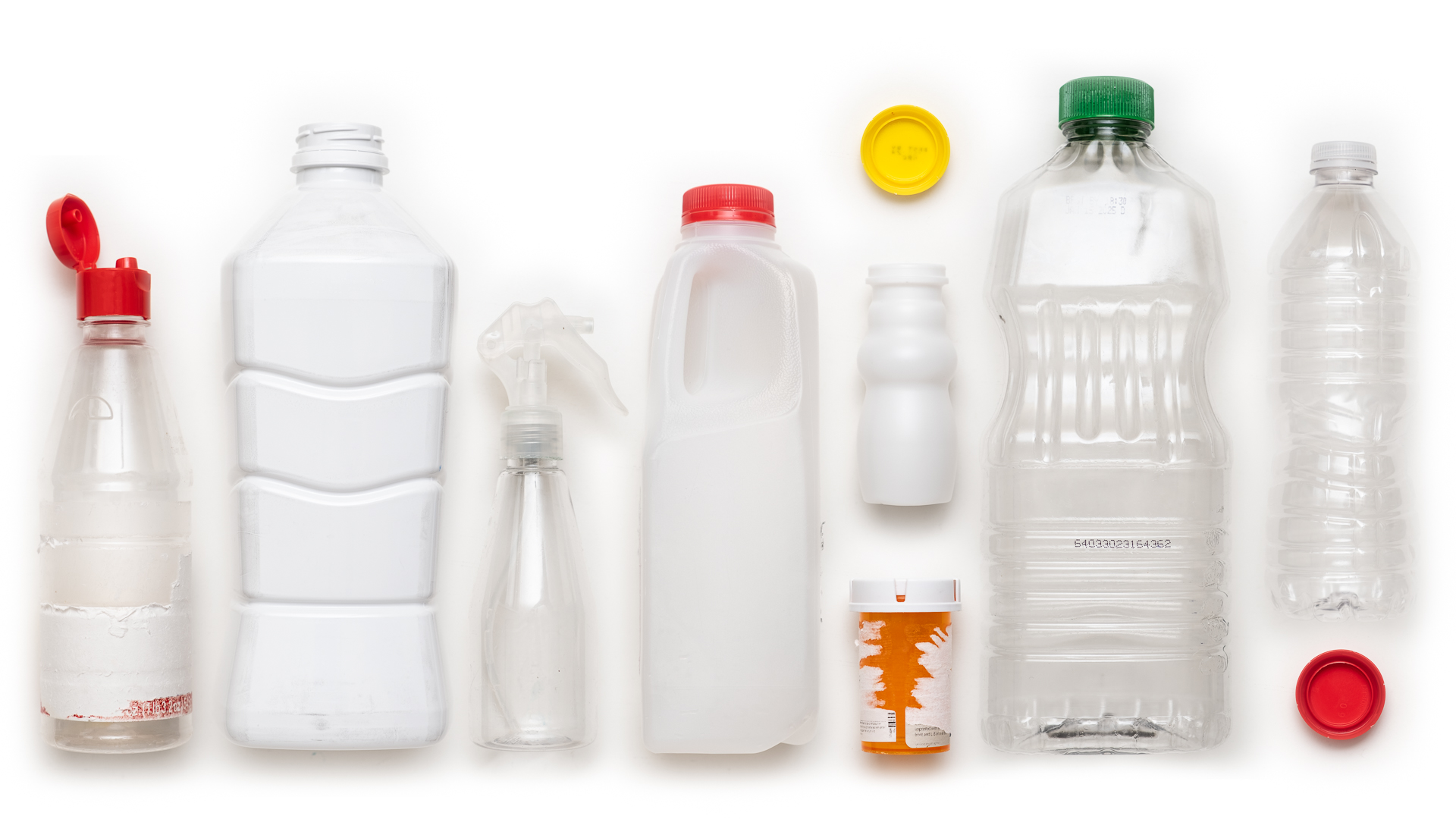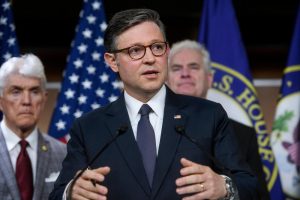
As State Budget Falls Short On Climate, Lawmakers Make Final Push for Packaging Reduction Bill
“This is the moment for New York to do something big,” said Judith Enck, founder of Beyond Plastics. She’s among those pushing state lawmakers to pass the Packaging Reduction and Recycling Infrastructure Act before the session ends in June, despite significant corporate lobbying against the bill.
Plastic products will make up a projected 30 percent of New York’s packaging waste in 2025, one report says—roughly 1.1 million tons. (Photo by Adi Talwar)
When a New Yorker goes to the grocery store they aren’t just buying food—they’re also buying waste. That’s because most products come in a package that eventually ends up in the trash.
This year alone the state will generate almost 3.8 million tons of packaging waste, a weight that is roughly equivalent to 10 Empire State Buildings, according to the non-profit Beyond Plastics.
Before the legislative session ends in June, lawmakers are making a final push to pass a bill known as the Packaging Reduction and Recycling Infrastructure Act (PRRIA) that aims to slash the amount of packaging waste New York produces by 30 percent over the next 12 years.
The efforts come after big ticket items championed by New York’s environmental groups were left out of the state’s final budget, and as climate protections are being rolled back on the federal level.
“This is the moment for New York to do something big, like passing PRRIA,” said Judith Enck, founder of Beyond Plastics and a former regional administrator in the U.S. Environmental Protection Agency (EPA). “It would signal that New York is still interested in protecting the environment.”
The budget falls short
While the state approved a budget for the 2026 fiscal year on May 8 that includes some climate wins, environmental advocates say it’s not enough.
The budget does set aside $2 million for a pilot program that will help homeowners do the repairs needed to participate in energy efficiency and weatherization programs.
And there is a larger $1 billion sum allocated for what Gov. Kathy Hochul calls a Sustainable Future Fund, which would mostly be used to reduce greenhouse gas emissions from buildings and help New York’s transportation fleet go electric.
“The investment will create good-paying jobs, improve long-term affordability for families, and significantly reduce harmful pollution,” said Gov. Hochul’s deputy communications director, Paul DeMichele.
“We’re prioritizing a greener economy by expanding access to green transportation and charging infrastructure, making our buildings more energy-efficient, and ultimately saving people money,” he added.
While the administration calls it “the largest climate investment in New York’s history,” the amount represents only a sliver of the state’s $254 billion budget. And it won’t provide the steadier stream of funding that programs left out of the budget sought to secure, advocates say.
“$1 billion over the course of the year is good. But we need to make sure that there’s continuous funding to address climate and reduce people’s energy bills and protect their health,” said Liz Moran, New York policy advocate for Earthjustice.
Environmental advocates at a rally for passage of the NY Heat Act in 2023, which one supporter called “the most important energy affordability bill of the session.” It still hasn’t passed. (Alliance for a Green Economy)
A Cap-and-Invest program that would put a price on carbon pollution to raise billions annually for climate initiatives failed to come to fruition again, despite the governor releasing an outline for the program two years ago. NY Heat Act, another item championed by environmentalists which would curb the expansion of gas infrastructure and save ratepayers money, didn’t make it into this year’s budget either.
Passing these and other pro-climate legislation like PRRIA by the end of session could counteract some of the climate setbacks happening on the federal level, environmentalists argue.
The Trump administration has already promised to end dozens of Biden-era environmental regulations. These include limits on climate pollution emitted by power plants, as well as regulating emissions for light, medium, and heavy-duty vehicles. Federal intervention is also stalling the advancement of projects to generate clean energy from wind in New York.
“We really need to make sure that New York State is standing up as a beacon for other states to look towards and follow while the federal government decimates environmental protections,” Moran said.
Mounting opposition
But in passing legislation like PRRIA,“our major problem is just the army of lobbyists that are opposing it,” said Enck.
At least 41 companies and fossil fuel industry groups signed up this year to lobby against the bill. That includes big companies like L’oreal and Coca-Cola to oil giants like ExxonMobil and the American Chemistry Council, a trade group for the chemical industry that has vehemently opposed the bill.
It would require such companies to redesign the products they sell in New York to make them recyclable. It would also prevent them from using the 17 worst toxic chemicals in packaging like lead, mercury and long lasting chemicals known as PFAS.
“It will impact the way they do business. You know, this bill is designed to change behavior and they just don’t want to do it,” said the bill’s sponsor in the Senate, Peter Harckham.
It would also charge companies a fee for the packaging they use so proceeds could be funneled back to local governments.
The Business Council of New York called the bill, “overly-aggressive legislation will lead to increased consumer costs and reduced consumer choices, in addition to its direct cost-impact on businesses.”
A mountain of plastic waste at the Sims Municipal Recycling in Sunset Park, Brooklyn. (Michael Appleton/Mayoral Photography Office)
As it stands, taxpayers foot the bill for discarded packaging to make its way to landfills. Supporters say the bill would cut back on the amount of waste discarded and shift the burden for waste management costs to the companies generating the trash. New York City alone is estimated to save $818 million over the first decade if PRRIA were enacted, according to a report by Beyond Plastics.
Meanwhile, the chemical industry rakes in massive profits from making discardable plastic products, which will make up a projected 30 percent of New York’s packaging waste in 2025, the report says. The lucrative plastics industry generates over $371 billion a year in profits.
The American Chemistry Council spent more than $930,000 last year to lobby against the legislation in Albany, which is nearly double what it spent in 2022, NY Focus reported last week.
Still lawmakers are hopeful the bill will make it across the finish line before the session ends in June.
Last year PRRIA got the stamp of approval from the Senate but failed to come up for a vote in the Assembly. And while it’s still making its way through the necessary committees in both chambers, Assembly Speaker Carl Heastie indicated that the bill will come to the floor for a vote this time around.
And the bill’s sponsors made changes since last year that address concerns raised by the industry, including cutting back on the amount of packaging waste the bill sought to reduce from 50 to 30 percent. This year’s version also allows companies to apply for a waiver if they can’t meet the criteria.
“We’ve got a good bill that incorporates strong environmental and public health protections and yet makes it workable for industry,” Harckham said.
To reach the reporter behind this story, contact Mariana@citylimits.org. To reach the editor, contact Jeanmarie@citylimits.org
Want to republish this story? Find City Limits’ reprint policy here.
The post As State Budget Falls Short On Climate, Lawmakers Make Final Push for Packaging Reduction Bill appeared first on City Limits.


